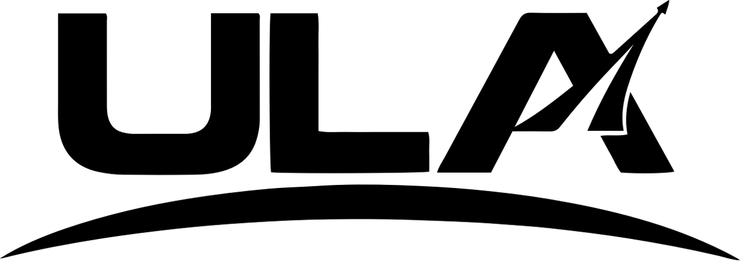Donate to Support Supercluster
Your support makes the Astronaut Database and Launch Tracker possible, and keeps all Supercluster content free.
SUPPORTSupercluster on Patreon
Your support makes the Astronaut Database and Launch Tracker possible, and keeps all Supercluster content free.
SUPPORTThis goes
to space
NROL-101
NROL (National Reconnaissance Office Launch) 101 is a classified payload.

On this
rocket
Atlas V - 531
Atlas V: the workhorse of United Launch Alliance's rocket fleet.
The rocket is a mix of Russian and American technology, using the Russian RD-180 as the rocket's first stage engine, and is one of the most versatile rockets in the world with 20 possible configurations -- though not all variants have flown.
Stats
Height: 58.3 m (191 ft) with payload fairing, 52.4 m (172 ft) with Starliner.
Diameter: 3.81 m (12.5 ft)
Mass: 590,000 kg (1,300,000 lb)
Stages: 2 (3 with Star 48 upper stage)
Developed in the mid- to late-1990s, it is the fifth and last major version of the veteran Atlas rocket, which began flying in 1957.
Lockheed Martin designed and built Atlas V as part of the U.S. government's 1994 initiative to create an Evolved Expendable Launch Vehicle (EELV) for national security missions.
The two companies with EELV rockets -- Lockheed Martin with Atlas V and Boeing with Delta IV -- merged in 2006, creating an effective U.S. market monopoly with United Launch Alliance (ULA).
For years, the U.S. government paid ULA over $800 million annually to maintain their facilities to be ready to launch EELV missions.
Therefore, pricing of the Atlas V has varied greatly over the years, with a basic Atlas V 401 (no boosters and a single-engine second stage) costing anywhere from the high-$90 millions to $163 million USD in the 2000s and early 2010s.
Sweeping price and cost-per-launch figure reductions have occurred since SpaceX began directly competing against ULA in the 2010s.
The Atlas V’s 531 variant costs a minimum of $140 million USD.
While not the cheapest rocket on the market, the Atlas V's safety is unparalleled -- with a 100% mission success rating.
Atlas V 531
This mission will use the Atlas V 531 variant - with a five-meter payload fairing (5), three side-mounted solid rocket boosters (3), and a single engine Centaur upper stage (1).
Of this configuration's previous flights, all have launched Advanced Extremely High Frequency satellites for the U.S. Air Force.
Image: John Kraus for Supercluster

From this
launch site
SLC-41 - Cape Canaveral Space Force Station, FL, USA
Space Launch Complex-41 is the east-coast home of United Launch Alliance’s Atlas V rocket. The pad hosted its first launch on December 21, 1965, and is currently being upgraded to support ULA's Vulcan rocket, with its first launch scheduled for no earlier than 2022. For several years, Vulcan and Atlas V will share the pad before Atlas V is retired.
From the 1960s to the 1990s, SLC-41 was used for the U.S. Air Force’s Titan III and Titan IV rockets. Over the years, it has served as the launch site for numerous significant missions, including the Helios probes to study the Sun, the Viking missions to Mars, the Voyager interstellar probes, the Mars Reconnaissance Orbiter, New Horizons to Pluto and the Kuiper Belt, and Juno to Jupiter.
The pad was also used to launch humans aboard Boeing's Starliner capsule, with the inaugural crewed mission occurring in June 2024.
Located on Florida’s east coast, Cape Canaveral is ideally situated to offer access to a wide variety of space destinations while launching over the open Atlantic Ocean, ensuring safety by avoiding populated areas on the ground. The Cape currently supports launches from four different rocket families: Atlas V, Delta IV, Falcon 9, and Minotaur. Additionally, launches of Vulcan from ULA and New Glenn from Blue Origin are scheduled to begin no earlier than 2024.
NASA's Kennedy Space Center, located on neighboring Merritt Island, and Cape Canaveral are often confused or referred to as a single location, but they are distinct government installations. Together, they are united under the name of a single operational area known as the Eastern Range for launch operations.
Over the years, the spaceport has been known by several names: Cape Canaveral Air Force Station (1949-1963), Cape Kennedy Air Force Station (1963-1973), Cape Canaveral Air Force Station again (1973-2020), and Cape Canaveral Space Force Station (2020-present).
Credit: ULA

Here's where to view NROL-101
Viewing Sites
- Alan Shepard Park
- A. Max Brewer Parkway Bridge
- Apollo Saturn V Center / Banana Creek
- Cherie Down Park
- Cocoa Beach Pier
- Exploration Tower
- Jetty Park
- Kennedy Space Center Visitor Complex
- LC-39 Observation Gantry
- Lori Wilson Park
- Playalinda Beach
- Rotary Riverfront Park
- Sand Point Park
- Sidney Fischer Park
- Spaceview Park
GET THE SUPERCLUSTER APP
THE SUPERCLUSTER PODCAST
A podcast exploring the amazing milestones that changed space history, the wildest ideas that drive our future, and every development in this new Golden Age of Space.
Donate to support
Your support makes the Astronaut Database and Launch Tracker possible, and keeps all Supercluster content free.
SupportCOPYRIGHT 2021 SUPERCLUSTER LLC

